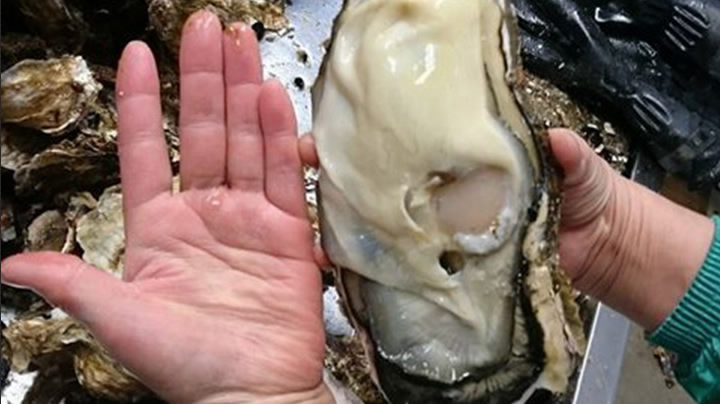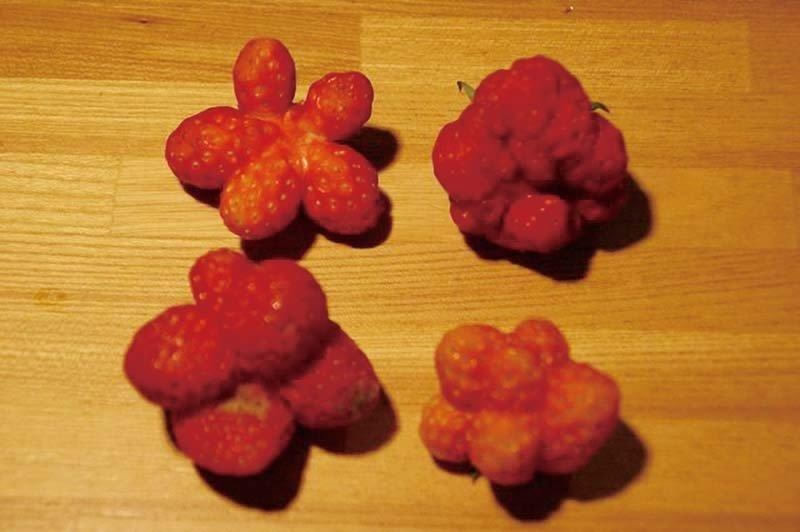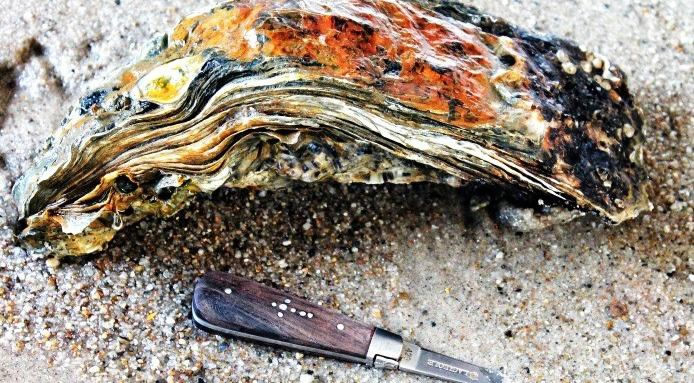
China
14:06, 12-Jan-2017
Japanese embassy says ‘mutant’ oyster safe
Updated
10:33, 28-Jun-2018

Pictures of a palm-sized Japanese oyster posted on social media have reawakened concern about mutations following the 2011 Fukushima nuclear accident, but the Japanese embassy in China has said that the bivalve is natural and safe.

Could these bizarre strawberries have been caused by nuclear mutation? CNS Photo
Could these bizarre strawberries have been caused by nuclear mutation? CNS Photo
Since a major earthquake caused a radioactive leak from the Fukushima Daiichi Nuclear Power Plant six years ago, there has been no end to rumors about heteromorphic animals and foodstuffs like bizarrely shaped strawberries.

Photo from Japanese Embassy in China
Photo from Japanese Embassy in China
This photo of the giant oyster, posted by a Facebook user with the screen name @Tamikonoumipakku on January 5, joined the annals of supposedly nuclear mutants.
Responding to the furor, the Japanese embassy in China identified the poster of the photo as Abe Tamiko, an aquatic businesswoman in Miyagi-ken, a prefecture around 180 km northeast of Fukushima. She told the embassy during a telephone interview that the oyster had been carefully bred for two years and that Miyagi-ken was the first prefecture in Japan to be accredited by the Aquaculture Stewardship Council (ASC).
According to a statement on the embassy’s Weibo account, Abe said, “We have cherished nature since the earthquake and have met the bivalve standard of the ASC, which means we insist on environment sustainability and social responsibility in fish farming. We went to great lengths to secure this accreditation. I am very worried about reports on the photo I’ve posted because it might make trouble for the fishermen. I am grateful to all countries for assisting Japan and welcome Chinese people to come to Japan for a taste of Japanese dishes.”

A 35-cm-long oyster found in Denmark in 2014
A 35-cm-long oyster found in Denmark in 2014
In fact, oysters tend to get bigger with age, with an average example being seven to 10 cm long. Some growing for 20 years can reach around 30 centimeters long. In 2014, an oyster measuring 35 cm was found in Wadden Sea National Park in Denmark.

SITEMAP
Copyright © 2018 CGTN. Beijing ICP prepared NO.16065310-3
Copyright © 2018 CGTN. Beijing ICP prepared NO.16065310-3